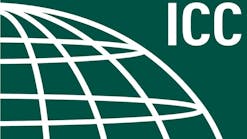AIA Billings Index Records Seventh Straight Month of Positive Growth
PRESS RELEASE
WASHINGTON DC – Sept. 22, 2021 – The Architecture Billings Index (ABI) recorded its seventh consecutive positive month, according to a new report today from The American Institute of Architects (AIA).
The ABI score for August was 55.6, up from July’s score of 54.6. Any score above 50 indicates an increase in billings from the prior month. During August, scoring for both the new project inquiries and design contracts moderated slightly but remained in positive territory, posting scores of 64.7 and 56.6 respectively.
“The surge in design activity continued in August, signifying an expected upturn in construction activity in the fourth quarter and continuing into 2022,” said AIA Chief Economist, Kermit Baker, Hon. AIA, PhD. “This expected expansion will magnify the already serious problems of price inflation and availability of many construction products and materials, as well as the emerging labor shortages in the industry.”
Despite some concerns about the ongoing impact of the Delta variant, most firms are continuing to report robust business conditions. Firms also reported that they continue to receive many inquiries into new projects, and that the value of contracts that they are signing for new design work is still growing.
Firms in all regions of the country continued to report growth in August as well, although the pace of growth has moderated somewhat at firms located in the Northeast over the last few months. Billings remained strongest at firms in the West and Midwest, while firms located in the South still reported increasing billings, but also expressed some concern about the impact of the ongoing—and already serious—hurricane season. Firms of all specializations also reported strengthening business conditions this month, with all seeing growth at about the same pace.
Key ABI highlights for August include:
- Regional averages: West (57.2); Midwest (55.2); South (52.5); Northeast (51.7);
- Sector index breakdown: Mixed practice (56.0); Commercial/industrial (54.7); Institutional (54.4); Multi-family residential (54.3).
The regional and sector categories are calculated as a three-month moving average, whereas the national index, design contracts and inquiries are monthly numbers.
Growth slows to more moderate rate in Q3
In the broader economy, the latest edition of the Federal Reserve’s Beige Book report, released on Sept. 8, showed that the pace of economic growth slowed to a more moderate rate across most of the country in August from its torrid pace earlier this year. However, they reported that residential real estate remains one of the strongest sectors, along with manufacturing, transportation, and nonfinancial services. Despite a noticeable pullback in dining out, travel, and tourism that has been observed due to the Delta variant, businesses in most areas are still optimistic in the short term. Both nonresidential and residential construction increased slightly overall, with the Atlanta district reporting steady residential and commercial real estate activity, while the San Francisco district saw a small decline in residential construction.
Employment growth also slowed in August, with nonfarm payroll employment adding just 235,000 new jobs, down from monthly gains of around one million in both July and June. In addition, architectural services employment was flat from June to July (the most recent data available) at 195,500, after averaging gains of nearly 1,000 new jobs a month in the first six months of the year.
Most firms have reopened offices, some with adaptations
This month, AIA asked architecture firms for the latest on their return to office plans, and what adaptations they have made, or plan to make, in order to do so. Overall, nearly two thirds of responding firms (65%) indicated that their office is now fully reopened, with 46% reporting that all/most employees have returned to the office and 19% indicating that some of their employees are back in the office. Others continue to work remotely full time. An additional 18% of firms indicated that their office has partially reopened, while just 3% of firms reported that their office remains fully closed. Of the remaining firms, 8% of firms have no office or were fully remote prior to the pandemic, and 6% have reopened, or plan to reopen, their office in some other way.
Of the firms that have either not yet reopened at all, or have only partially reopened, 66% indicate that they do plan to fully reopen their office at some point. Most of those firms, 47%, expect that even when their office fully reopens, some employees will continue working remotely on a permanent basis, while 19% plan to have all employees back in the office once they fully reopen. An additional 14% of firms have still not decided when, if, or how their office will reopen.
Firms have also made, or are planning to make, a variety of adaptions in order to reopen their firms in the post-pandemic world. Four in 10 firms indicated that masks are required in common areas of the office, and an additional 27% are considering implementing that requirement. Although this data was collected before the government’s vaccine mandate for large companies was launched, 38% of firms reported that they will require employees returning to the office be vaccinated, and an additional 25% are considering it.
While few firms indicated that they have adjusted office square footage (either reduced or expanded), 37% have required social distancing or limited capacity in the office, 27% have increased/improved office filtration and/or ventilation, and 18% have redesigned employee workspaces. And while just a handful of firms have completely eliminated in-person meetings (4%), 19% have mandated that clients or other individuals coming to the office for meetings must be vaccinated. Few firms reported that they are requiring higher insurance premiums for unvaccinated employees (1%), or temperature checks to enter the office (7%).
For more on the latest ABI report, visit AIA.org.









